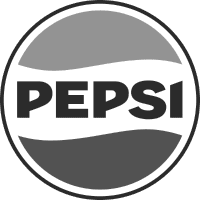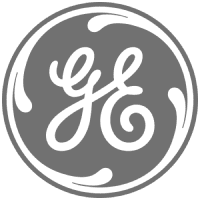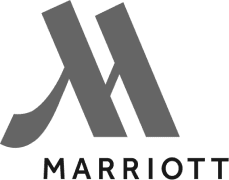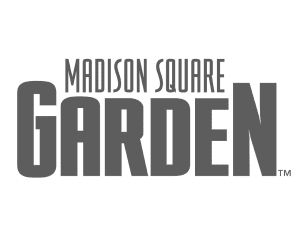Portrait Ordering Kiosks
MetroClick’s 32-inch self-service terminal delivers enhanced ordering experiences for quick-service restaurants and ticketing applications, featuring large responsive displays with dual-display options to serve multiple customers simultaneously during peak periods.
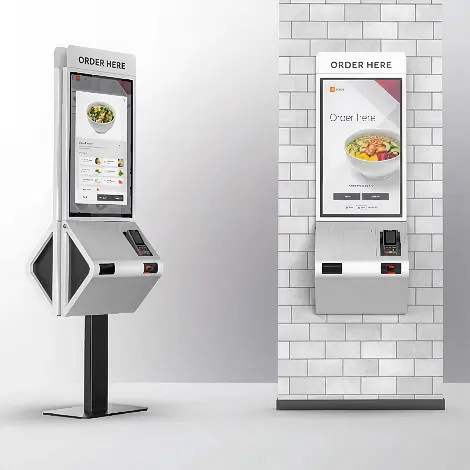
Trusted by industry leaders to power better customer experiences
32" Self-Ordering Kiosk
Large-format self-service terminal optimized for quick-service restaurants and ticketing solutions. Features 32-inch Full HD display with anti-glare coating, flexible mounting options, and dual-display capability to reduce waiting times during busy periods.
Technical Specifications:
- Display: 32″ Full HD (1920×1080), 500 cd/m², 3000:1 contrast, projected capacitive touch (10 touches)
- Processor: Intel 10th Gen Core processors (Celeron to i7), min 8GB DDR4 (max 64GB)
- Dimensions: 490×290×1400mm (wall-mount) to 490×560×2000mm (dual back-to-back)
- Power: 100-240V AC, 60W standby/100W load consumption
- Features: 80mm thermal printer, 1D/2D barcode scanner, multiple payment integration options
- Environment: 10°C-35°C operating, 20%-90% humidity range
- Mounting: Wall-mount, single pedestal, or back-to-back dual configuration
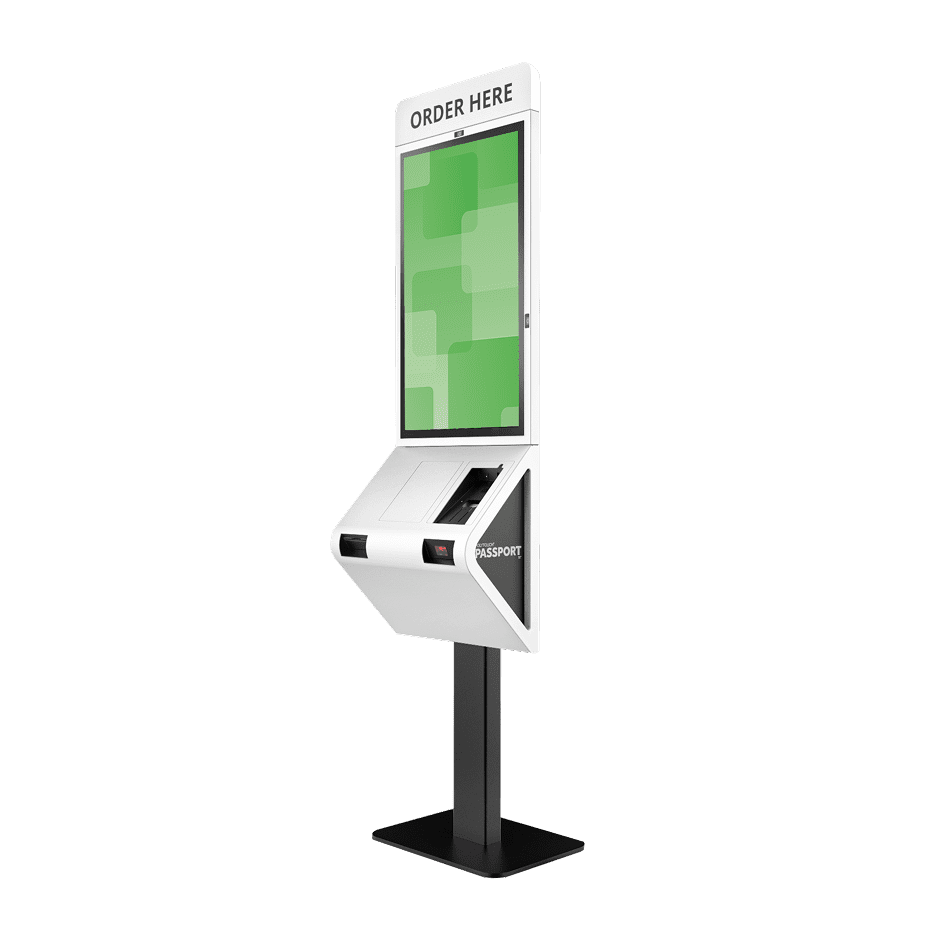
Discover the versatility built into each product
Built for Every Environment
Trust in ruggedized, rated, reliable and robust devices of all shapes and sizes that perform flawlessly indoors or out.
Engage and Inform
Guide users through effortless, self-driven, interactive experiences or stream advertisements and promotions 24/7 on optically bonded, enhanced viewing touch screens.
Modular in Design
Easily configure, connect and scale devices to suit different locations, functions and use cases, while streamlining maintenance, serviceability and operational expenses.
Unapologetically Authentic
Fit any space with aesthetics and branding that drives emotional resonance and authentic connections to your true brand.
Other hardware options
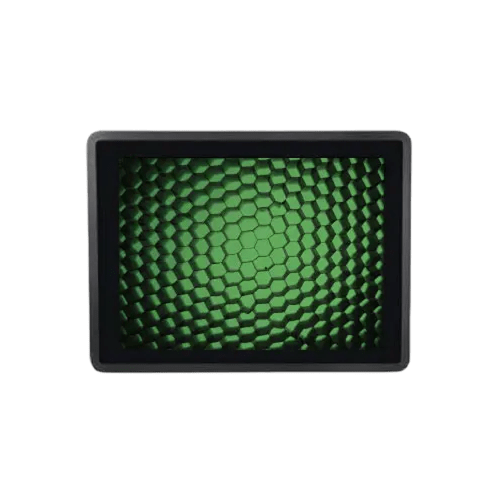
Small Format Kiosks
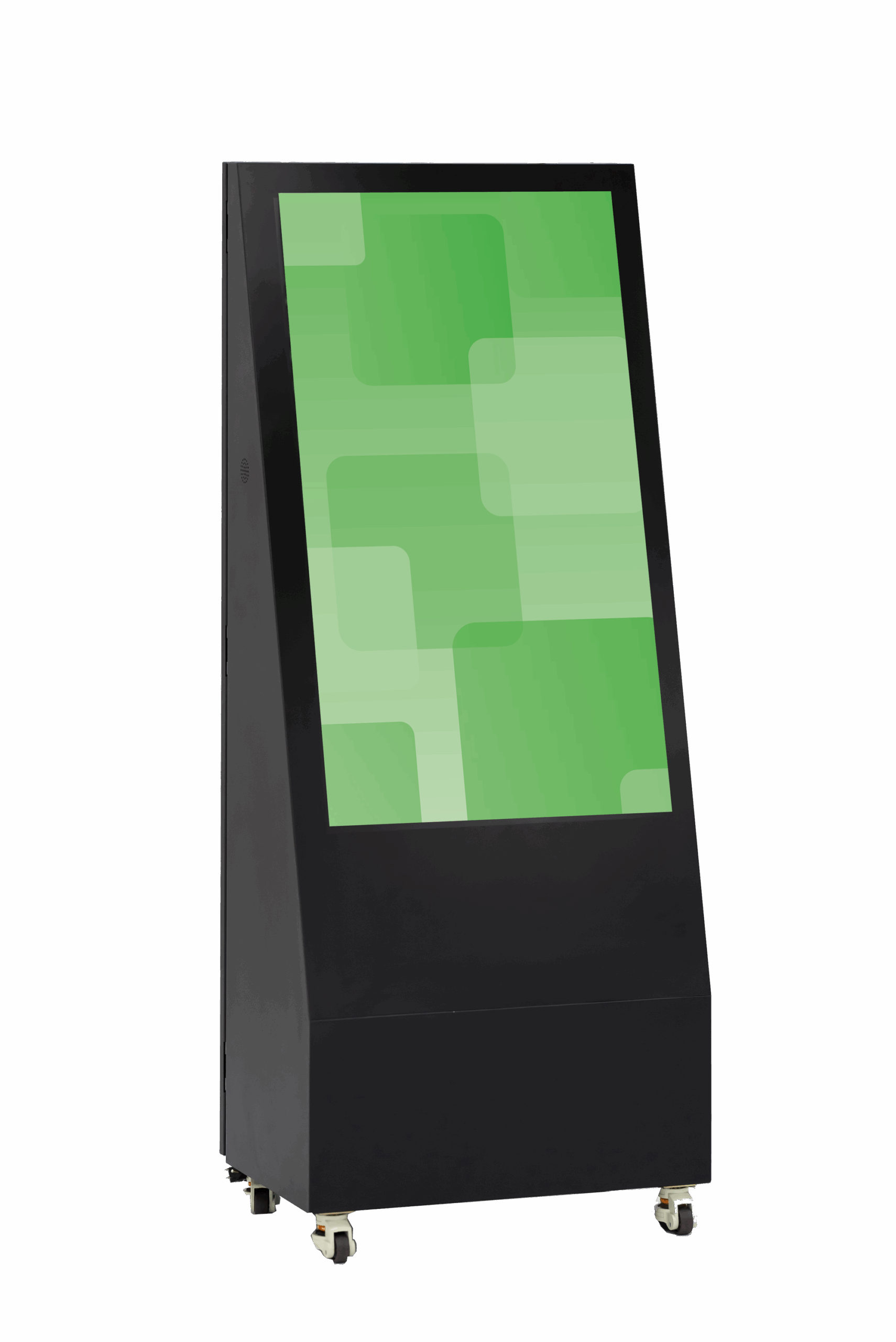
Large Format Kiosks
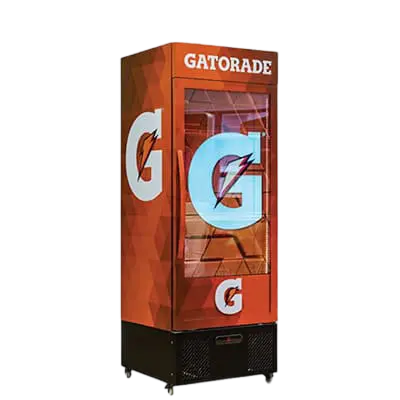
Immersive Kiosks
More Information
Portrait Ordering Kiosk Technology: Transforming Vertical Display Solutions
Portrait ordering kiosk technology represents a specialized evolution in self-service systems, leveraging vertical screen orientation to optimize menu presentation, content readability, and space efficiency in commercial environments. MetroClick’s portrait-oriented solutions maximize vertical real estate to display comprehensive product listings, detailed descriptions, and intuitive navigation structures that mirror natural reading patterns.
These vertically-configured systems address specific operational needs where traditional landscape displays prove less effective, particularly in quick-service restaurants, retail environments, and space-constrained locations.
The adoption of portrait kiosk configurations reflects a sophisticated understanding of human-computer interaction principles and spatial optimization strategies. Vertical displays naturally accommodate scrolling behaviors familiar from smartphone usage, creating immediate user comfort with the interface.
Portrait ordering kiosks excel at presenting hierarchical information structures, lengthy menu items, and detailed product specifications without requiring excessive horizontal eye movement. This orientation advantage becomes particularly valuable in high-traffic environments where quick comprehension and rapid decision-making directly impact operational efficiency.
Architectural Advantages of Portrait Display Configurations
Vertical Screen Optimization for Menu Presentation
Portrait ordering kiosks leverage vertical screen dimensions to present menu categories, items, and modifiers in naturally flowing layouts that minimize cognitive load. The elongated display format allows complete meal combinations to remain visible simultaneously, from appetizers through desserts, without requiring screen transitions that interrupt the ordering flow. This comprehensive visibility reduces order abandonment rates while encouraging add-on purchases through persistent display of complementary items.
Screen real estate utilization in portrait configurations typically achieves 40% more content density compared to landscape equivalents when displaying list-based information. Restaurant menus, retail catalogs, and service options benefit from this vertical efficiency, presenting more choices within comfortable viewing zones. Typography optimization for portrait displays allows larger, more readable text while maintaining information hierarchy through strategic use of vertical spacing and visual grouping techniques.
Ergonomic Benefits of Vertical Interfaces
Portrait kiosk designs align with natural human posture and viewing angles, particularly for standing users in ordering queues. The vertical format positions critical interaction elements within comfortable reach zones for users of varying heights, from children to tall adults. Touch targets naturally distribute along the vertical axis, reducing arm fatigue during extended interactions while maintaining ADA compliance through thoughtful interface design.
Eye movement patterns on portrait displays follow natural top-to-bottom scanning behaviors, reducing visual fatigue compared to wide horizontal layouts requiring extensive lateral movement. This ergonomic advantage proves particularly valuable in high-volume ordering environments where transaction speed directly impacts customer satisfaction. Portrait configurations also minimize glare issues in facilities with overhead lighting, as the narrower horizontal profile reduces reflective surface area exposed to ceiling fixtures.
Industry-Specific Applications for Portrait Ordering Systems
Quick-Service Restaurant Implementations
Fast-food establishments increasingly deploy portrait ordering kiosks to streamline drive-thru and in-store ordering processes. The vertical format excels at displaying combo meals with all components visible simultaneously, eliminating confusion about included items. Customization options for each menu component appear in logical vertical progressions, guiding customers through selections without overwhelming choice paralysis. Nutritional information and allergen warnings integrate seamlessly within the vertical layout without obscuring primary menu content.
Portrait kiosks in restaurant environments typically feature 32” to 43” displays in 9:16 aspect ratios, providing optimal viewing distances for standing customers. Integration with kitchen display systems ensures orders are transmitted with proper formatting regardless of display orientation. Multi-language support benefits from vertical layouts that accommodate longer translated text strings without disrupting the design. Payment terminal integration positions naturally below the main display, creating intuitive transaction flows from selection through payment completion.
Retail and Service Industry Deployments
Retail environments utilize portrait ordering kiosks for product browsing, inventory queries, and custom order placement. Clothing retailers leverage vertical displays to show full-length garment images without scaling compromises. The portrait format naturally accommodates detailed product specifications, size charts, and availability information in scannable vertical lists. Service businesses, including print shops, pharmacy counters, and ticketing locations, benefit from portrait layouts that mirror traditional paper forms while adding interactive enhancements.
Vertical kiosk configurations in retail settings often incorporate peripheral devices positioned ergonomically along the vertical axis. Barcode scanners mount at a comfortable waist height for product lookup. Receipt printers position naturally at the bottom of portrait enclosures. Card readers integrate at standard counter heights within the vertical footprint. This component arrangement creates cohesive self-service kiosks occupying minimal floor space while maintaining full functionality.
Technical Specifications for Portrait Display Systems
Display Technology and Resolution Considerations
Portrait ordering kiosks demand specific display specifications optimized for vertical content presentation. Resolution requirements typically specify 1080×1920 pixels minimum for 32” displays, scaling to 2160×3840 for larger installations requiring exceptional detail. Pixel density considerations become critical in portrait orientations where users view screens at closer distances, necessitating higher DPI ratings to maintain text sharpness and image quality.
Brightness specifications for portrait kiosks range from 350 nits for indoor installations to 1000+ nits for window-facing deployments. Viewing angle requirements prove particularly important given the extended vertical dimension, with IPS or VA panel technologies ensuring consistent color and contrast across the entire screen height.
Touch overlay technologies must account for portrait-specific usage patterns, with capacitive systems calibrated for vertical gesture recognition and palm rejection along the elongated edges.
Mounting and Structural Engineering
Portrait kiosk installations require specialized mounting solutions addressing the unique weight distribution and stability challenges of vertical configurations. Center of gravity calculations for tall portrait displays necessitate wider base footprints or wall-mounting options to prevent tipping. Cable management systems must accommodate the vertical routing while maintaining aesthetic appeal and avoiding interference with customer interactions.
Thermal management in portrait enclosures addresses heat concentration at display tops through strategic ventilation designs. Passive cooling channels follow natural convection patterns enhanced by the vertical orientation. Component placement within portrait housings optimizes airflow while maintaining accessibility for maintenance. Structural frames utilize reinforced designs accounting for the increased leverage forces generated by tall portrait displays compared to lower landscape configurations.
Content Strategy for Vertical Display Formats
Information Architecture in Portrait Layouts
Effective content design for portrait ordering kiosks leverages vertical scrolling paradigms familiar from mobile device usage. Category navigation typically employs persistent top-level menus with vertical expansion for subcategories. Product listings utilize card-based layouts stacked vertically with consistent spacing and visual hierarchy. Call-to-action buttons position prominently within thumb-reach zones when considering typical user positions relative to portrait displays.
Visual design principles for portrait formats emphasize vertical rhythm through consistent spacing, alignment, and progressive disclosure of information. Hero images adapt to portrait aspect ratios without critical content cropping. Text blocks optimize for narrow column widths, improving readability while maintaining sufficient content density. Animation and transition effects follow vertical motion patterns that feel natural within the portrait frame, avoiding jarring horizontal movements that conflict with the display orientation.
Multi-Language Optimization for Vertical Interfaces
Portrait ordering kiosks excel at accommodating multiple language options without disrupting the layout. Vertical text expansion for languages requiring more characters than English integrates smoothly within portrait layouts. Right-to-left language support benefits from the narrower horizontal constraints of portrait displays. Character-based languages like Chinese, Japanese, and Korean display efficiently in vertical orientations traditionally used for these writing systems.
Dynamic layout adjustments for language changes preserve visual hierarchy while accommodating varying text lengths. Button sizing algorithms account for longer translations while maintaining touch target standards. Menu structures adapt intelligently to language-specific ordering preferences without requiring completely different interface designs. This linguistic flexibility proves essential for diverse market deployments where customer demographics span multiple language groups.
Operational Benefits of Portrait Kiosk Deployments
Space Efficiency and Traffic Flow Management
Portrait ordering kiosks optimize floor space utilization in constrained environments through reduced horizontal footprints. The vertical configuration allows placement in narrow corridors, between existing fixtures, or along walls where landscape kiosks cannot fit. Queue formation naturally follows the linear arrangement of portrait kiosks, creating organized customer flows without requiring extensive floor markings or barrier systems.
Traffic pattern analysis in portrait kiosk deployments reveals improved customer approach angles and reduced congregation around ordering points. The vertical profile creates clear sightlines for customers evaluating wait times while minimizing visual obstruction for other store operations. Multiple portrait units can be arranged efficiently along walls or in island configurations, multiplying service capacity without proportional space requirements compared to landscape alternatives.
Maintenance and Serviceability Advantages
Portrait kiosk designs often provide superior maintenance access through rear-opening enclosures aligned with technician working heights. Component layouts in vertical configurations naturally separate heat-generating elements from sensitive displays through thermal stratification. Modular construction approaches for portrait systems enable individual component replacement without complete disassembly, reducing service time and operational disruption.
Software updates and content management for portrait ordering kiosks benefit from standardized vertical templates, reducing customization requirements across deployments. Remote diagnostics capabilities integrate naturally with portrait display layout, showing system status information in vertical dashboards. Cleaning procedures for portrait touchscreens prove more efficient given the reduced reach requirements compared to wide landscape displays, enabling faster routine maintenance during operational hours.
Future Evolution of Portrait Ordering Technologies
Emerging technologies promise enhanced capabilities for portrait kiosk systems. Extended reality (XR) integrations will leverage portrait displays as windows into virtual showrooms where customers examine products in three-dimensional detail. Voice ordering interfaces will complement portrait visual displays, with vertical screens showing order confirmations and visual feedback during verbal interactions. Biometric authentication systems will integrate seamlessly within portrait form factors, with cameras and sensors positioned at natural eye levels.
Artificial intelligence will optimize portrait content presentation based on real-time analysis of customer demographics, time of day, and historical preferences. Dynamic menu layouts will adapt to individual users while maintaining the vertical optimization advantages.
Predictive ordering algorithms will streamline repeat customer experiences by prominently displaying likely selections within the portrait interface framework. MetroClick’s portrait ordering kiosk solutions represent thoughtfully engineered systems maximizing the unique advantages of vertical display orientations.
Our expertise encompasses optimal hardware selection, portrait-specific software interfaces, and implementation strategies ensuring successful deployments. From space-constrained quick-service restaurants to high-volume retail environments, portrait kiosks deliver operational efficiency while enhancing customer experiences. Contact our portrait display specialists to explore how vertical kiosk configurations can transform your ordering operations while optimizing valuable floor space.
For businesses considering comprehensive self-service solutions, explore our range of payment kiosks, wayfinding kiosks, and specialized outdoor kiosks designed to meet diverse operational requirements across all industries.




